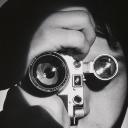Yahoo Answers is shutting down on 4 May 2021 (Eastern Time) and the Yahoo Answers website is now in read-only mode. There will be no changes to other Yahoo properties or services, or your Yahoo account. You can find more information about the Yahoo Answers shutdown and how to download your data on this help page.
do most photographers start out like this?
i can take hundreds of photos before i hit one that i really do like most of my photos turn out to be flops
8 Answers
- 2 weeks ago
I must congratulate you on asking this question as it appears that you are willing to learn. Welcome to photography.
- MsAleshaLv 73 weeks ago
Welcome to photography. Thankfully the SIMM cards hold lots of photos so you can take lots and sort through to find the one you want.
- qrkLv 73 weeks ago
I must congratulate you on asking this question as it appears that you are willing to learn. Evaluating your images is one of the first steps at becoming better. Experienced photographers are always evaluating their images. The flop images are your learning tool. What makes the image bad? What makes the good image good?
For starters, you need to learn about the exposure triangle, lighting and composition. It will take a year of practice to get comfortable with these subjects, but, expect a lifetime of learning. Depending on what you shoot, perhaps learning about styling and posing.
A good read for the exposure triangle is "UnderstandingExposure" by Bryan Peterson. Lots of pictures to emphasize what he is discussing. Your local library might have this book.
B&H's Youtube Event Space channel has lot of good lecture videos at beginner and intermediate levels.
- SumiLv 73 weeks ago
Yes, this is normal for any beginner. Shooting hundreds to get one good one is not a good hit ratio. This tells me that you do not do any internal editing, which is fine for now as it's something you'll learn to do with experience. With experience over time, you will learn as to what is a keeper and what isn't before you even press the shutter button. Being able to pre-visualize the image is an important skill that should come slowly with time.
I'd say that an enthusiast with a few years under his/her belt will likely consistently get about 1 good shot for every 20 shots taken. However, as your experience grows, what you consider to be a good shot will change, and become more critical. Thus you'll have to shoot more to get more keepers, which is why National Geographic photographers shoot so many shots and publish just .01%. But then again, the photographers and editors at the Geographic have extraordinarily high standards.
It also depends upon what you shoot. Someone who's a street photographer will have a lousy hit ratio simply because they can't control the environment. However, a wedding photographer will have a much better success rate since they can control every aspect of the shot. For the rest of us who go out with no particular shot in mind, just shooting to shoot, our hit rate is going to be rather bad in comparison, but that's okay.
- Land-sharkLv 73 weeks ago
Nowadays with digital yes. Then one day the penny drops and you start to put your camera on a tripod and compose the shot in the LCD panel making minor adjustments to get the composition right. Shoot in RAW and bracket the exposure. Once you get into doing that, you will automatically 'help' even your smartphone camera to do what nobody designed it to do. Make the picture tell a story; no story then it's probably not the shot to bother with.
- keerokLv 73 weeks ago
No.
I started out with film so I learned to pick my shots very meticulously. I still do even now with digital which is a lot more convenient. Before I take a shot, I would already know my settings. I would take a test shot then readjust if necessary before shooting again. It helps if you have a camera from a low-tech brand that forces you to think before you shoot.
- 3 weeks ago
It has been said that the difference between an amateur and professional photographer is the size of their wastebaskets.
But that is really somewhat mocking. Nowadays with digital there are a lot more photos taken but hundreds of photos taken to get one you like is excessive.
I spent 19 years in the field and started out in the film age as well as long before automated cameras and it did require more planning and discipline so that meant fewer photos. Therefore my habits may be more old school.
However, I did shoot multiple exposures of each composition as well as backups. Typically 4 photographs would have 20 exposures and of the 4 versions 1 would choose 1 or 2 versions as "marketable." The net outcome then, would be ten photos of each saleable photo including backup frames.
Ultimately though, it comes down to eye and composition. Starting out, your "eye" should have some ability to see what will make a good photo to begin with and your ability to frame the view and make a pleasing composition will spell the difference between being an amateur snapshooter and a good or professional photographer.
You'll make mistakes, certainly. But out of every-say ten exposures, my personal experience is that eight should be of subjects that are worthy of attention and out of those eight with a minimum of four exposures each with varying composition and exposure at least 4 should be worthy of attention.
This calculates out to 32 photographs to yield 4 good photographs. This estimate is off the cuff and would take time to achieve. It is also old-school and one photographer's point of view. Others may consider it too rigid.
However, it is one "target" you might consider as you think about your work and becoming more discerning to avoid hundreds of "flops" to get one you like.
Good luck.






